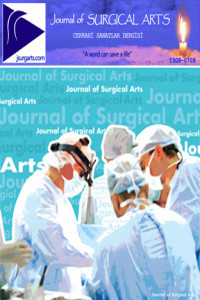External and internal oblique abdominis muscle release (EIMR) for complex incisional hernia repair: Modification of partition surgical technique
External and internal oblique abdominis muscle release (EIMR) for complex incisional hernia repair: Modification of partition surgical technique
Incisional hernia is the name given to hernias that form in the incision site after abdominal operations. The only treatment option for incisional hernias is surgery and the repair of incisional hernias is still a serious issue for surgeons. The aim of this study is to present an alternative surgical treatment procedure for the treatment of incisional hernias. The study included patients who were diagnosed with complex incisional hernia and underwent surgery between November 2016 and December 2017. In addition to demographic data such as age and gender, the operative and postoperative morbidity and mortality rates were documented. The patients who underwent additional surgical procedure other than herniography were excluded from the study. The study included 16 patients who met the inclusion criteria. Of 16 patients, nine (56.25%) were male and seven (43.75%) were female. The mean age of the patients was 51.25 years and the mean body mass index was 25.3 kg/m2. The hernia size measured in the computed tomography was 11.01 cm on average in men and 11.56 cm on average in women. The intravesical pressure measured intraoperatively before the surgery was 3.4 mmHg on average. While the mean intravesical pressure was found as 12.25 mmHg after the abdomen was closed, the mean intravesical pressure was measured as 6.43 mmHg after the relaxation incision and graft installment. The duration of the surgery was 48 minutes on average. In the postoperative period, paralytic ileus responsive to treatment was observed in two patients and skin necrosis was observed in one patient. No pulmonary embolism, respiratory problems and compartment syndrome that may cause mortality developed in patients. No recurrence was observed in patients in the control one year after the surgery. The golden standard surgical method for the incisional hernia surgery has yet to be determined. There is still a need for prospective randomized studies. We believe that our technique can be an alternative to other techniques in the incisional hernia surgery due to its easy applicability and low rate of complications.
